©Pablo Picasso - Woman's Head. Fernande 1910
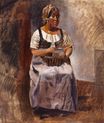 |
 |
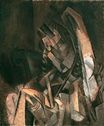 |
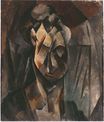 |
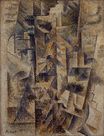 |
 |
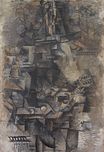 |

Woman's Head. Fernande 1910
61x50cm oil/canvas
Museo Nacional Centro de Arte Reina Sofía
The image is only being used for informational and educational purposes
<< Previous G a l l e r y Next >>
From Museo Nacional Centro de Arte Reina Sofía:
Tête de femme (Fernande) (Woman's Head [Fernande]) is a clear example of the discoveries Pablo Picasso made in Horta, based around the search for three-dimensionality on a flat surface, here translated into the multiple facets that define the head of the female figure. The distinct zones that make up Fernande’s face (from 1909 onwards, Fernande inspired a series of Cubist portraits, including sculptures) are drawn in lines that form sharp geometric shapes, making a kind of grid that moves across the canvas, bringing it to life. The palette is limited to browns, greens, greys and blacks typical of Analytical Cubism, allowing the artist to concentrate his attention on the formal structuring of the space, built up from the superimposition of various planes. The result is a composition made up of sharply defined yet complexly fragmented areas. As Jan Avgikos points out with regard to Cubist works in general, the total image in this kind of painting – and therefore in Tête de femme (Fernande) – must be “thought” as much as “seen”, taking as a starting point the visual clues provided by the artist, traces that need to be carefully reassembled before they can give the painting its complete meaning.
Paloma Esteban Leal